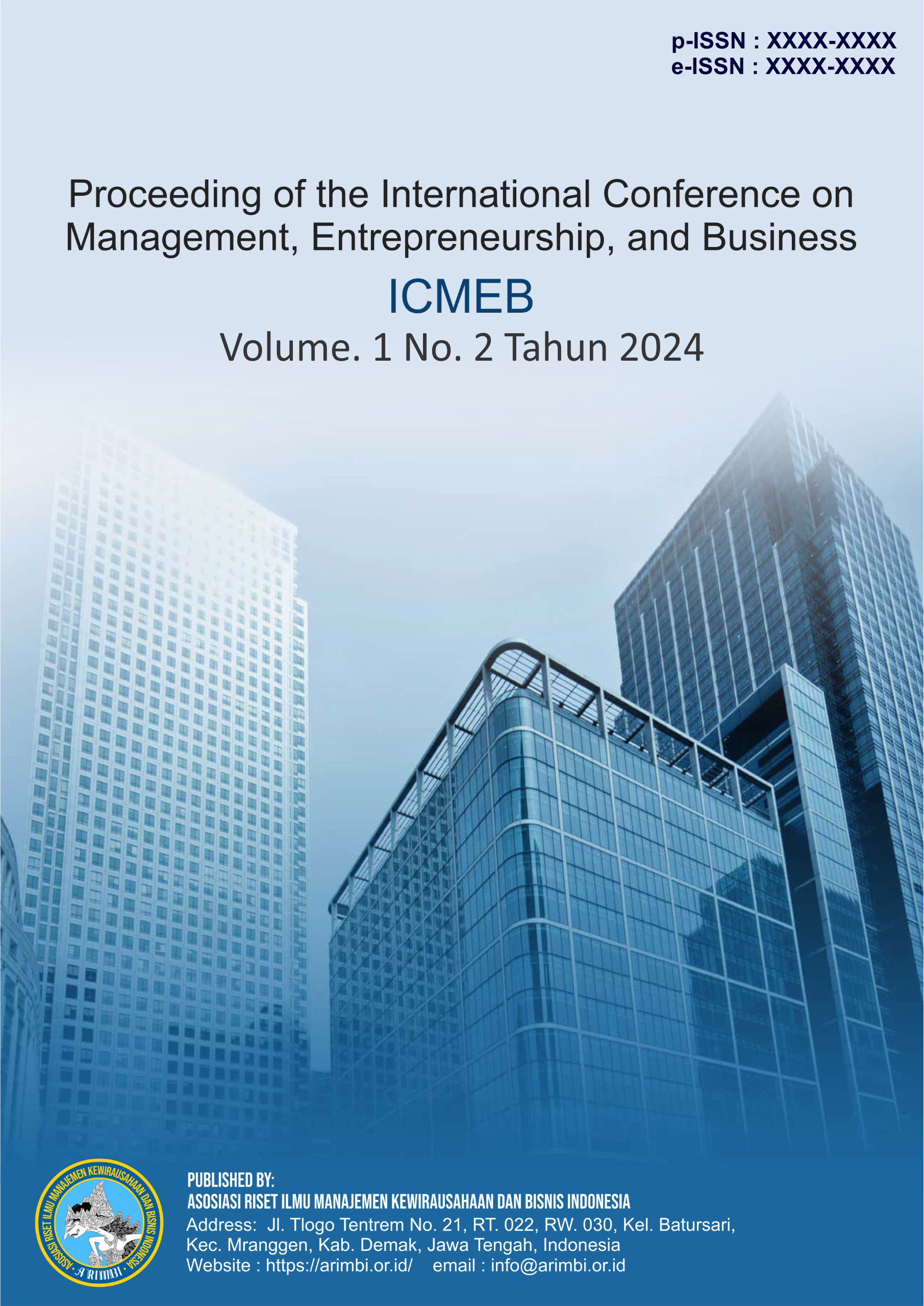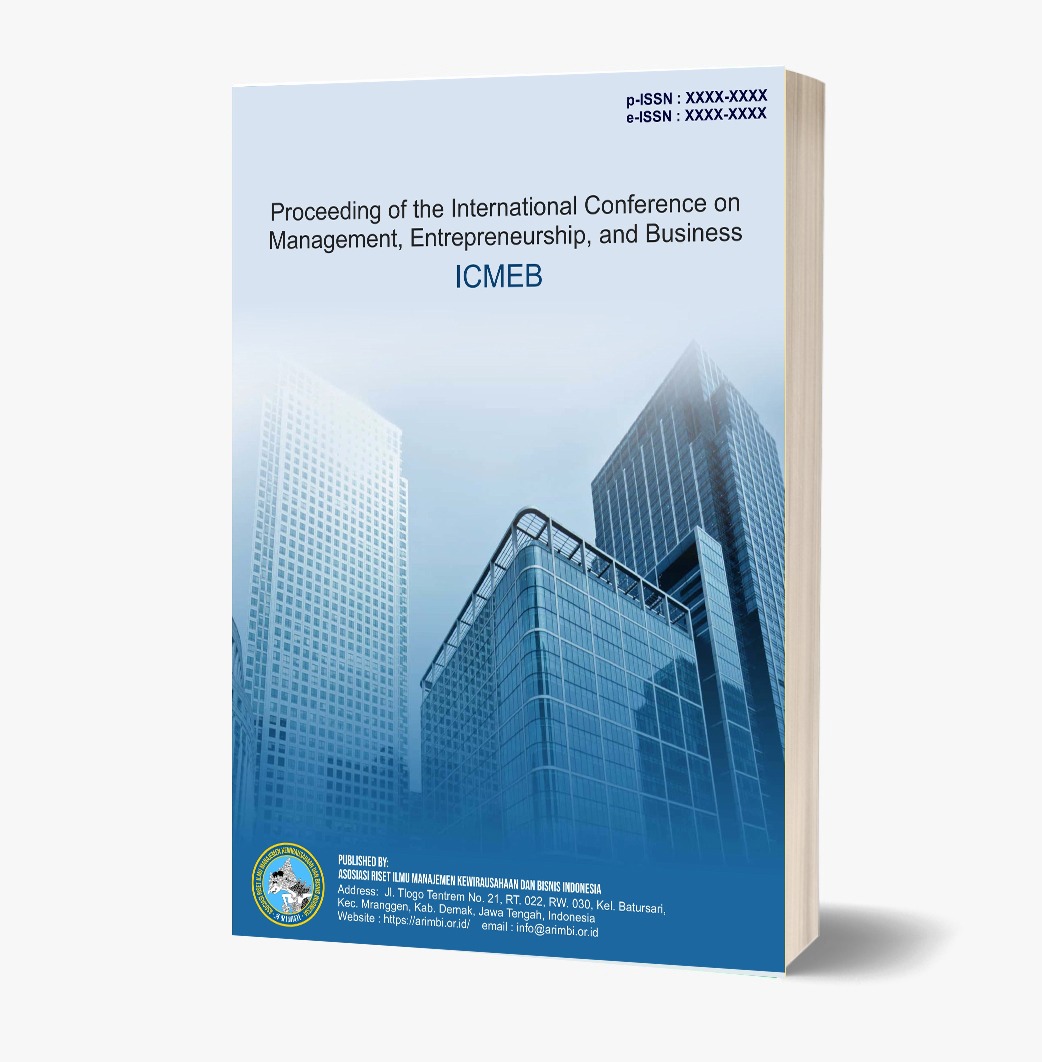Employee Development Strategies to Enhance Organizational Performance
DOI:
https://doi.org/10.61132/icmeb.v1i2.119Keywords:
employee development, organizational performance, training needs assessment, workforce engagement, strategic managementAbstract
This article discusses the critical importance of employee development as a strategic approach to enhance organizational performance. In an increasingly competitive business environment, organizations must prioritize the growth and development of their workforce to maintain a competitive edge. By identifying specific training and development needs, organizations can create tailored programs that effectively improve employees' skills, knowledge, and competencies. This research employs a qualitative approach, utilizing case studies from several companies in Indonesia to explore various employee development initiatives and their impact on organizational outcomes. The findings indicate that investing in employee development not only enhances individual performance but also contributes significantly to the overall achievement of organizational goals. Furthermore, the study highlights the role of leadership, mentoring, and the integration of technology in facilitating effective employee development strategies. Ultimately, this research underscores the necessity for organizations to adopt comprehensive employee development practices to foster a culture of continuous improvement and engagement.
Downloads
References
Allen, D. G., Bryant, P. C., & Vardaman, J. M. (2010). Retaining talent: A guide to analyzing and managing employee turnover. Business Horizons, 53(6), 649-658. https://doi.org/10.1016/j.bushor.2010.07.001
Allen, N. J., & Meyer, J. P. (1990). The measurement and antecedents of affective, continuance and normative commitment to the organization. Journal of Occupational Psychology, 63(1), 1-18. https://doi.org/10.1111/j.2044-8325.1990.tb00506.x
APA Handbook of Industrial and Organizational Psychology (Vol. 3, pp. 469-503). American Psychological Association. https://doi.org/10.1037/12169-016
Baird, K., & Meshoulam, I. (1988). Managing two fits of strategic human resource management. The Academy of Management Review, 13(1), 116-128. https://doi.org/10.5465/amr.1988.4306779
Becker, G. S. (1993). Human Capital: A Theoretical and Empirical Analysis, with Special Reference to Education. University of Chicago Press. https://doi.org/10.7208/chicago/9780226041223.001.0001
Brown, K. G., & Sitzmann, T. (2011). Training and employee development. In S. Zedeck (Ed.),
Day, D. V., Fleenor, J. W., Atwater, L. E., Sturm, R. E., & McKee, R. A. (2014). Advances in leader and leadership development: A review of 25 years of research and theory. The Leadership Quarterly, 25(1), 63-82. https://doi.org/10.1016/j.leaqua.2013.11.004
De Vos, A., & Soens, N. (2008). Protean career behavior: A lifelong learning perspective. Journal of Vocational Behavior, 73(2), 249-262. https://doi.org/10.1016/j.jvb.2008.05.001
Eisenberger, R., Stinglhamber, F., & Vandenberghe, C. (2016). Perceived supervisor support and employee outcomes: The mediating role of perceived organizational support. European Journal of Work and Organizational Psychology, 25(2), 174-188. https://doi.org/10.1080/1359432X.2015.1090801
Garavan, T. N., Carbery, R., & Rock, A. (2012). Mapping the future of employee development: A conceptual framework. International Journal of Human Resource Management, 23(3), 407-426. https://doi.org/10.1080/09585192.2011.559058
Gibbons, R. (2005). Incentives between firms. The Journal of the European Economic Association, 3(2-3), 371-382. https://doi.org/10.1162/154247604323068752
Heskett, J. L., Jones, T. O., Loveman, G. W., Sasser, W. E., & Schlesinger, L. A. (1994). Putting the service-profit chain to work. Harvard Business Review, 72(2), 164-174.
Hofstede, G. (2011). Dimensions of National Cultures. In T. J. S. W. (Ed.), The Sage Handbook of Cross-Cultural Management (pp. 12-29). Sage Publications.
Kauffeld, S., & Lehmann-Willenbrock, N. (2016). The impact of employee development on organizational performance: A systematic review. Human Resource Management Review, 26(1), 233-245. https://doi.org/10.1016/j.hrmr.2015.04.002
Kram, K. E. (1985). Mentoring at Work: Developmental Relationships in Organizational Life. University Press of America. https://doi.org/10.1177/1059601185002002002
McCauley, C. D., & Hezlett, S. A. (2001). Developing nontraditional leaders: The role of developmental relationships. In R. K. M. (Ed.), The Handbook of Leadership Theory and Practice (pp. 183-206). Harvard Business Press.
Noe, R. A. (2017). Employee Training and Development(7th ed.). McGraw-Hill Education
Noe, R. A., & Wilk, S. L. (1993). Investigation of the factors that influence employees' participation in development activities. Journal of Applied Psychology, 78(2), 291-302. https://doi.org/10.1037/0021-9010.78.2.291
Saks, A. M., & Gruman, J. A. (2014). What do we know about employee engagement?. Human Resource Development Quarterly, 25(2), 155-182. https://doi.org/10.1002/hrdq.21187
Salas, E., Tannenbaum, S. I., Kraiger, K., & Smith-Jentsch, K. A. (2012). The science of training and development in organizations: What matters in practice. Psychological Science in the Public Interest, 14(2), 74-101. https://doi.org/10.1177/1529100612436661
Wright, P. M., & Nishii, L. H. (2006). Strategic HRM and organizational behavior: Integrating multiple levels of analysis. In Research in Personnel and Human Resources Management (Vol. 25, pp. 1-30). Emerald Group Publishing Limited. https://doi.org/10.1016/S0742-7301(06)25001-1






